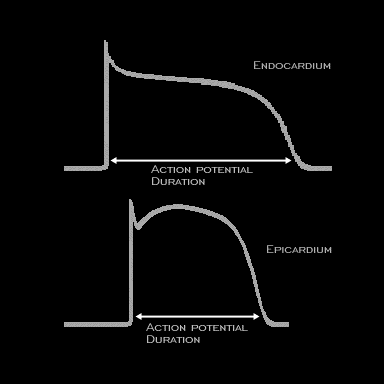
This reversal in the sequence of repolarization occurs because the duration of the action potential, that is the duration from the onset of the action potential to the end of rapid repolarization is less on the epicardium than on the endocardium. This occurs because the ionic currents responsible for early repolarization in epicardial action potentials and are slightly different than those in endocardial and mid-myocardial action potentials. As a result, the action potentials are also different.
